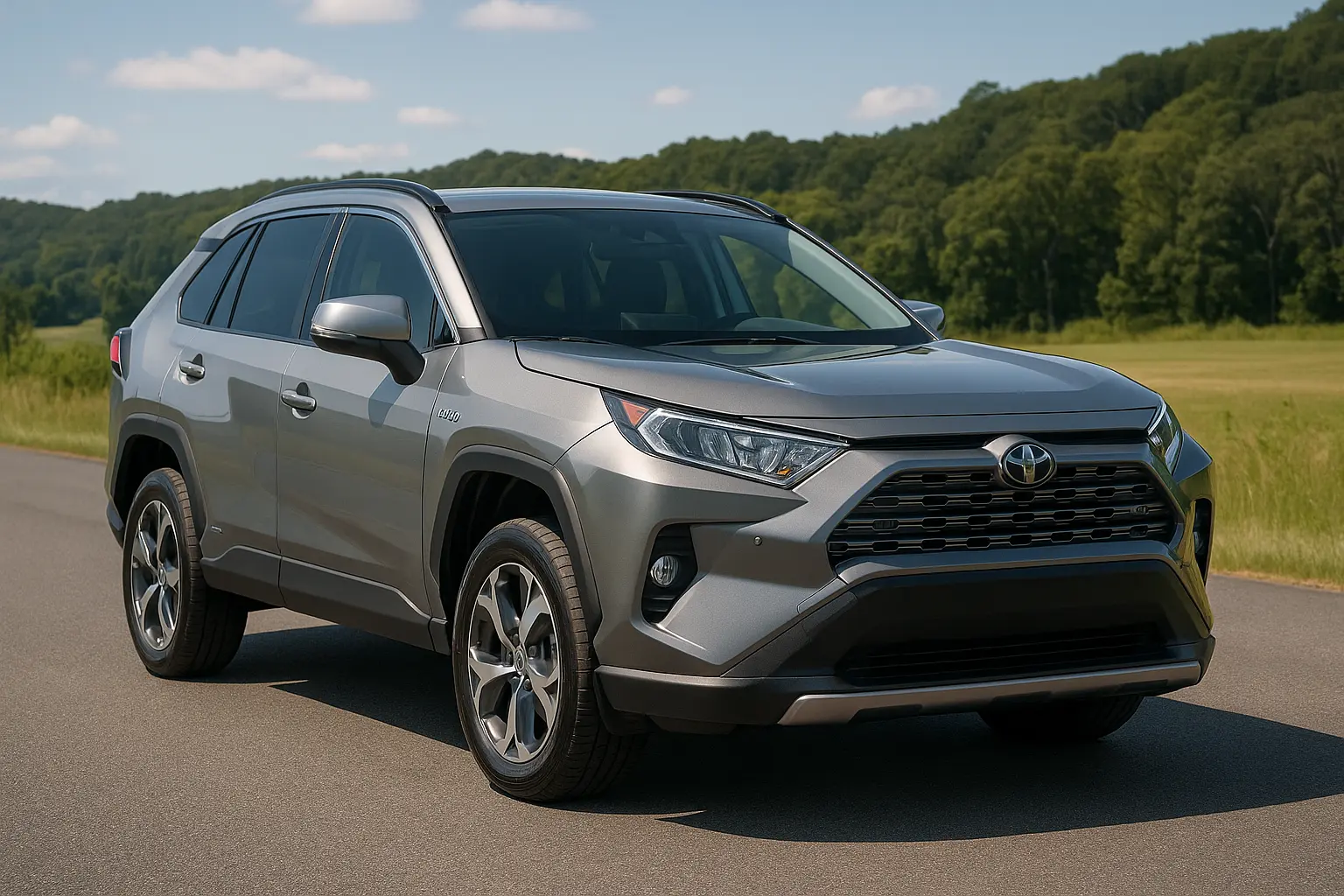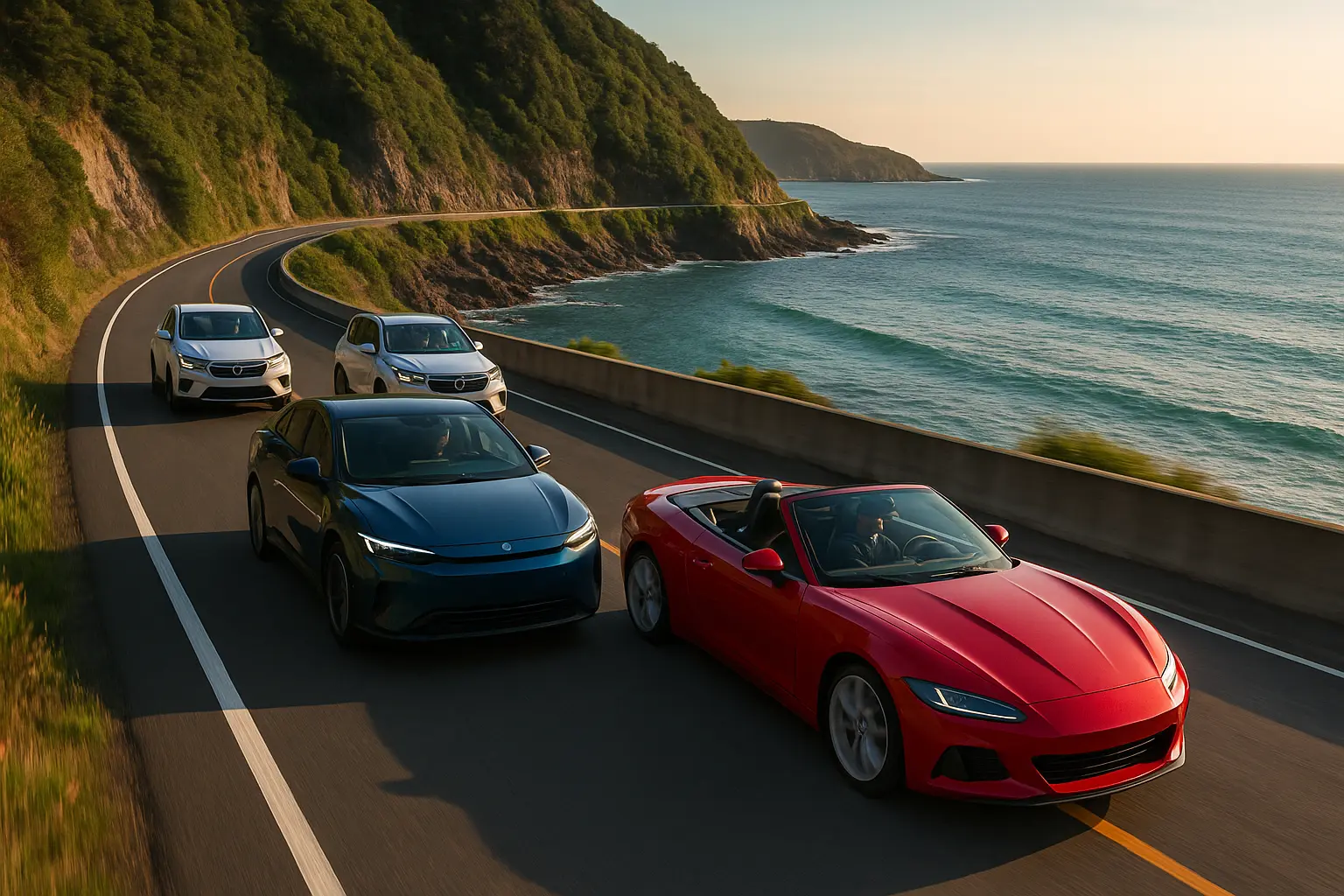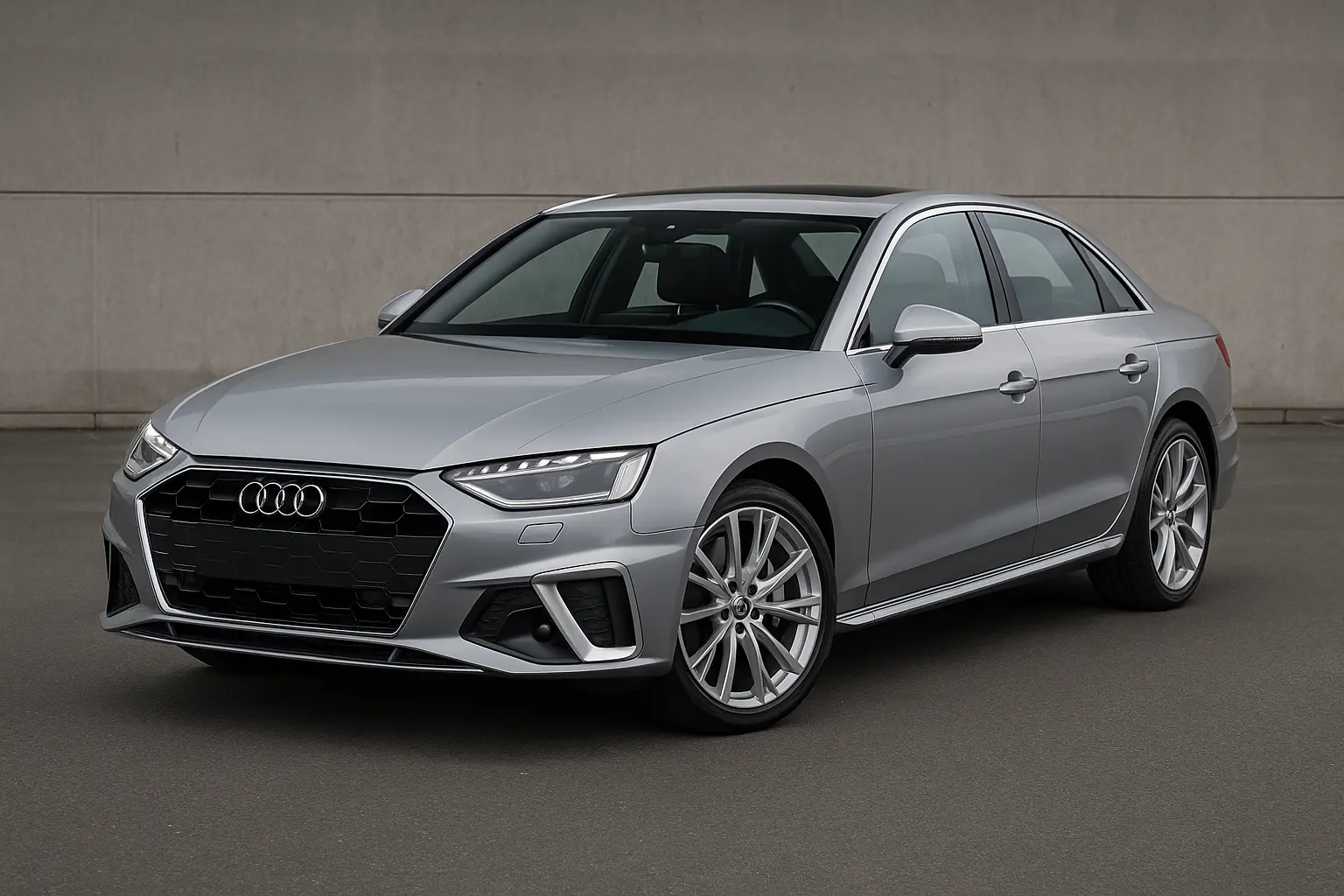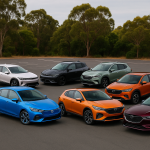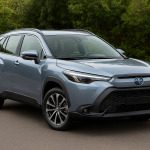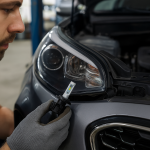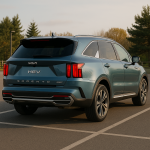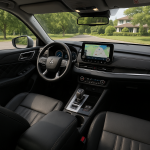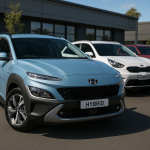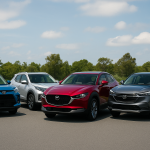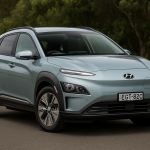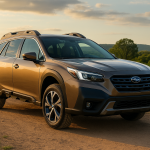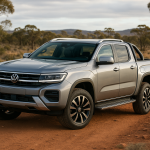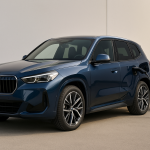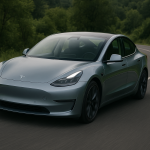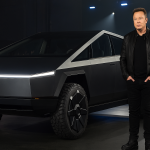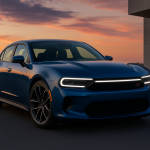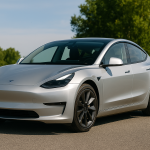Hybrid SUVs have taken the Australian automotive market by storm. Once seen as a niche option for eco-minded drivers, hybrids are now mainstream. They promise something that resonates deeply with Aussies: lower running costs without sacrificing practicality, performance, or style. With petrol prices climbing, government incentives on green vehicles, and advancements in hybrid technology, more buyers are turning to hybrid SUVs as the perfect balance between efficiency and everyday usability.
This comprehensive guide explores everything you need to know about hybrid SUVs in Australia — from how they work, to top models available in 2025, fuel savings, performance benefits, and tips for choosing the right one for your lifestyle.
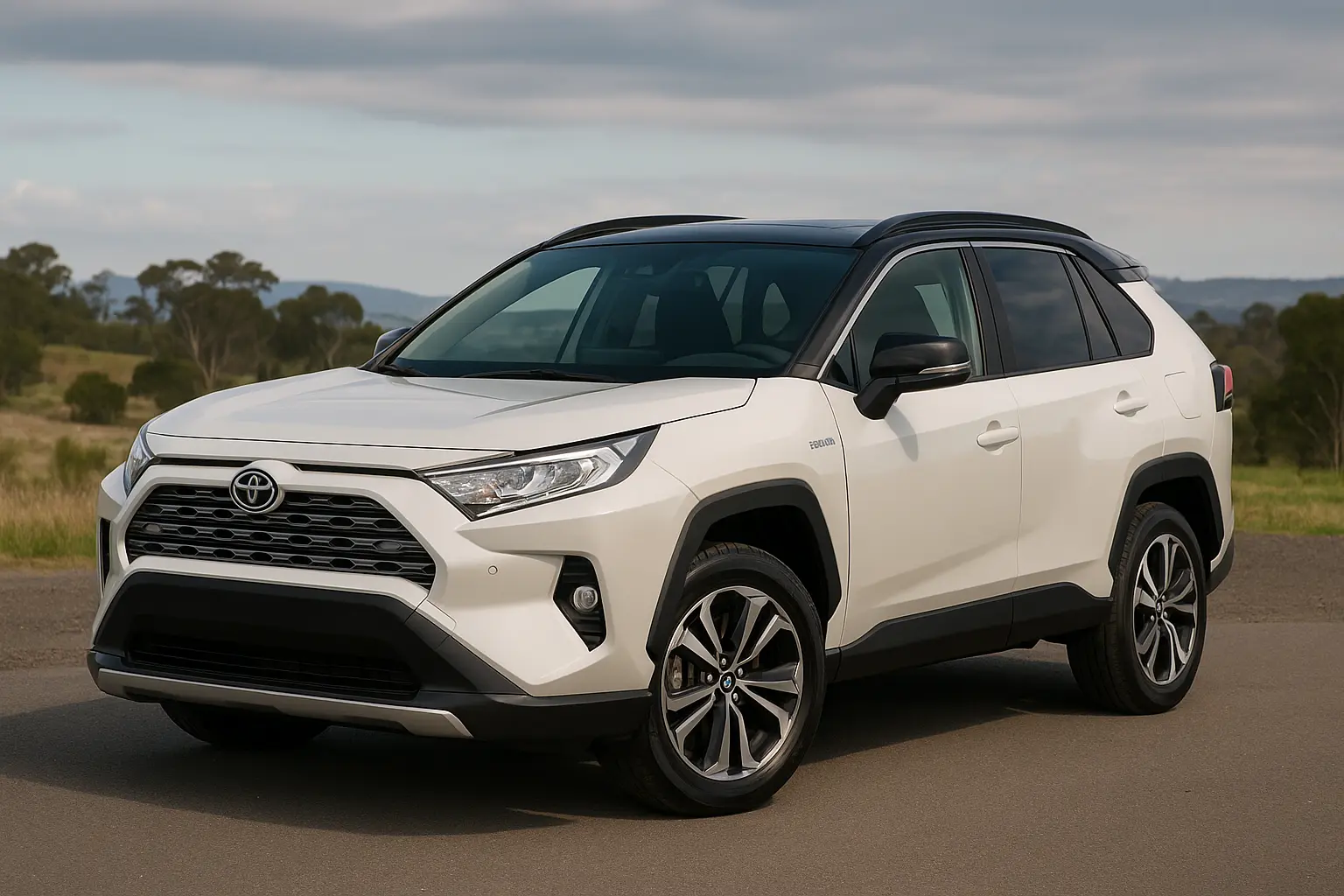
Why Hybrid SUVs Are Booming in Australia
Australia has always loved SUVs. They fit our wide roads, long drives, and adventurous lifestyles. But traditional petrol SUVs are thirsty, especially when tackling long commutes or towing. Hybrid SUVs address this pain point, blending petrol engines with electric motors to significantly improve fuel efficiency while retaining the rugged versatility Australians demand.
Other key reasons driving adoption:
Fuel savings: Hybrids can reduce fuel bills by up to 30–40%, depending on driving style.
Urban practicality: Electric assistance shines in city stop-start traffic, common in Sydney and Melbourne.
Government incentives: Some states, such as NSW and VIC, offer rebates and stamp duty exemptions for green vehicles.
Reduced emissions: Many buyers are increasingly conscious about lowering their carbon footprint.
Technology appeal: Advanced infotainment, driver assistance, and smooth transitions between power sources enhance the overall driving experience.
How Hybrid SUVs Work
Understanding hybrid powertrains is key to appreciating their benefits.
Parallel Hybrids: The most common type in Australia. Both the petrol engine and electric motor can drive the wheels directly. Toyota’s RAV4 Hybrid is a classic example.
Series Hybrids: Less common, where the petrol engine charges the battery, and the electric motor drives the wheels.
Plug-In Hybrids (PHEVs): Can be charged via a wall socket or charging station. They offer longer electric-only ranges (20–80 km typically) before the petrol engine kicks in. Mitsubishi Outlander PHEV is a strong contender here.
Mild Hybrids (MHEVs): Use a small battery/motor to support the petrol engine but can’t drive the car on electricity alone. Popular in luxury SUVs.
Advantages of Hybrid SUVs
Lower Fuel Consumption: Petrol-electric synergy saves money at the bowser.
Smooth Driving: Instant torque from electric motors delivers responsive acceleration.
Quieter Ride: Especially noticeable in urban driving when running on electric mode.
Resale Value: Hybrids are in demand, often holding value better than equivalent petrol-only SUVs.
Versatility: Unlike pure EVs, no range anxiety. You can refuel anywhere in Australia.
Challenges to Consider
Higher Initial Cost: Hybrids are generally more expensive upfront compared to petrol equivalents.
Battery Replacement Anxiety: While rare, replacement costs can be high. Most brands, however, offer 8–10 year battery warranties.
Towing Capacity: Some hybrids have lower braked towing limits than diesel SUVs, which may matter for caravan owners.
Charging Access (for PHEVs): If you don’t have home charging, PHEV benefits may be limited.
Top Hybrid SUVs in Australia (2025 Line-Up)
Toyota RAV4 Hybrid
Arguably the poster child of hybrid SUVs in Australia. The RAV4 consistently tops sales charts thanks to its blend of affordability, reliability, and efficiency. Offering around 4.7L/100km fuel consumption, spacious interiors, and Toyota’s bulletproof hybrid tech, it’s a practical all-rounder.
Toyota Kluger Hybrid
For bigger families, the Kluger offers three rows of seating and impressive efficiency for its size. A favourite among suburban families needing practicality without breaking the fuel budget.
Mitsubishi Outlander Plug-In Hybrid EV (PHEV)
Australia’s best-selling PHEV. With up to 84 km of electric-only driving, it suits commuters who can charge at home but want petrol backup for long trips. The Outlander also shines with a generous equipment list and five-star ANCAP rating.
Kia Sorento Hybrid & PHEV
Kia’s Sorento offers hybrid and plug-in hybrid choices. With sleek styling, premium interiors, and strong safety tech, it rivals Toyota’s large hybrid SUVs but adds Kia’s industry-leading seven-year warranty.
Hyundai Tucson Hybrid
Hyundai has entered the hybrid SUV market with confidence. The Tucson Hybrid offers engaging driving dynamics, advanced driver assists, and competitive fuel economy.
Lexus NX Hybrid
A luxury option blending hybrid efficiency with premium materials, sharp styling, and advanced infotainment. A solid choice for buyers wanting refinement and lower running costs.
Ford Escape PHEV
Though petrol variants are being phased out, the Escape PHEV remains for buyers wanting plug-in efficiency in a familiar Ford package.
Honda CR-V e:HEV
Honda has re-entered the hybrid SUV market with its e:HEV technology, focusing on a smooth, almost EV-like driving experience paired with strong practicality.
Hybrid SUVs vs Petrol SUVs
Traditional petrol SUVs remain popular due to lower upfront prices and high availability. But for many buyers, hybrid SUVs make more sense:
Fuel Costs: A petrol SUV averaging 10L/100km costs almost double in fuel compared to a hybrid at ~5L/100km.
Driving Feel: Hybrids deliver smoother starts, particularly noticeable in city traffic.
Maintenance: Petrol SUVs are simpler, but hybrids often prove surprisingly low-maintenance due to regenerative braking and lower engine strain.
Hybrid SUVs vs Electric SUVs
Many shoppers compare hybrids with full EVs.
Range: Hybrids never face range anxiety, while EVs depend on charging infrastructure.
Upfront Cost: EVs are still pricier, though dropping. Hybrids sit in a sweet spot.
Green Factor: EVs produce zero tailpipe emissions, hybrids only reduce them. Eco-conscious buyers may lean EV if charging is viable.
Resale Trends: Hybrids currently have broader appeal in Australia, making them safer resale bets.
Ownership Experience in Australia
Fuel Savings in the Real World
Drivers report halving their weekly fuel bills when switching from mid-sized petrol SUVs to hybrids. For long-distance drivers, savings are less dramatic, but still notable.
Servicing Costs
Hybrids typically cost no more than petrol SUVs to service. Toyota, Hyundai, and Kia offer capped-price servicing, easing long-term ownership concerns.
Reliability
Toyota has a strong track record with hybrids, and newer entrants like Kia and Hyundai are also proving dependable. Most manufacturers back their hybrid batteries with warranties of up to 10 years.
Insurance
Insurance costs are slightly higher due to the vehicle’s higher market value and technology. However, competition among insurers has narrowed the gap.
Future of Hybrid SUVs in Australia
The hybrid SUV boom shows no sign of slowing. EV infrastructure is growing, but Australia’s size and charging limitations mean hybrids remain a practical compromise. Expect more PHEV and strong-hybrid models from Chinese automakers like BYD and MG, offering competitive pricing and features.
By 2030, hybrids will likely make up a significant share of SUV sales, especially in metro areas where fuel savings and emissions rules matter most.
Tips for Buying a Hybrid SUV
Assess Your Driving: If most of your trips are short, a PHEV makes sense. For mixed driving, a regular hybrid may be better.
Consider Resale: Stick with popular models like Toyota RAV4 or Mitsubishi Outlander for stronger resale value.
Check Charging Options: For PHEVs, ensure you can charge at home or work.
Compare Running Costs: Don’t just look at upfront price — factor in fuel, servicing, and resale.
Take a Test Drive: Hybrids feel different. Ensure you like the transition between petrol and electric.
Conclusion
Hybrid SUVs are no longer fringe choices — they’re mainstream, practical, and increasingly stylish. For Australian drivers, they tick key boxes: lower fuel costs, strong performance, family-friendly practicality, and environmental responsibility. Whether you’re a family needing a spacious SUV, a commuter after lower running costs, or a driver who wants future-ready technology without the charging challenges of a full EV, hybrid SUVs in Australia are worth serious consideration.
The 2025 line-up offers more choice than ever, spanning affordable family haulers to luxury crossovers. With the market only expanding, now is the time to explore what hybrid SUVs can bring to your driveway.
Leave a comment
Your email address will not be published. Required fields are marked *


